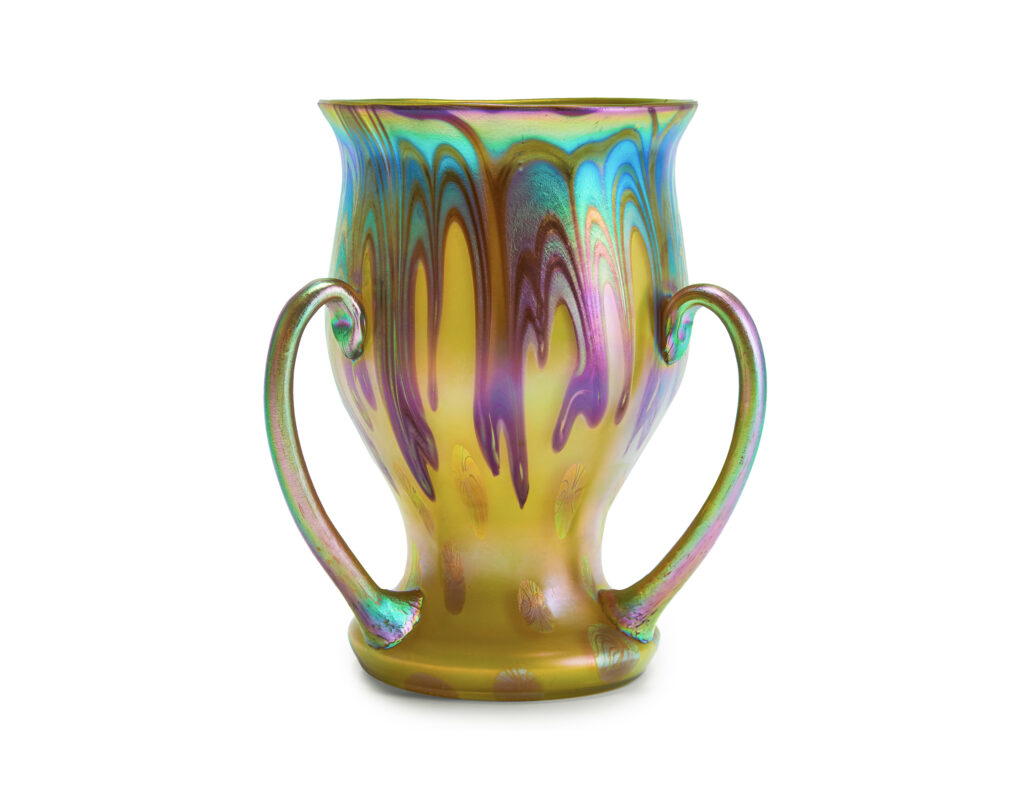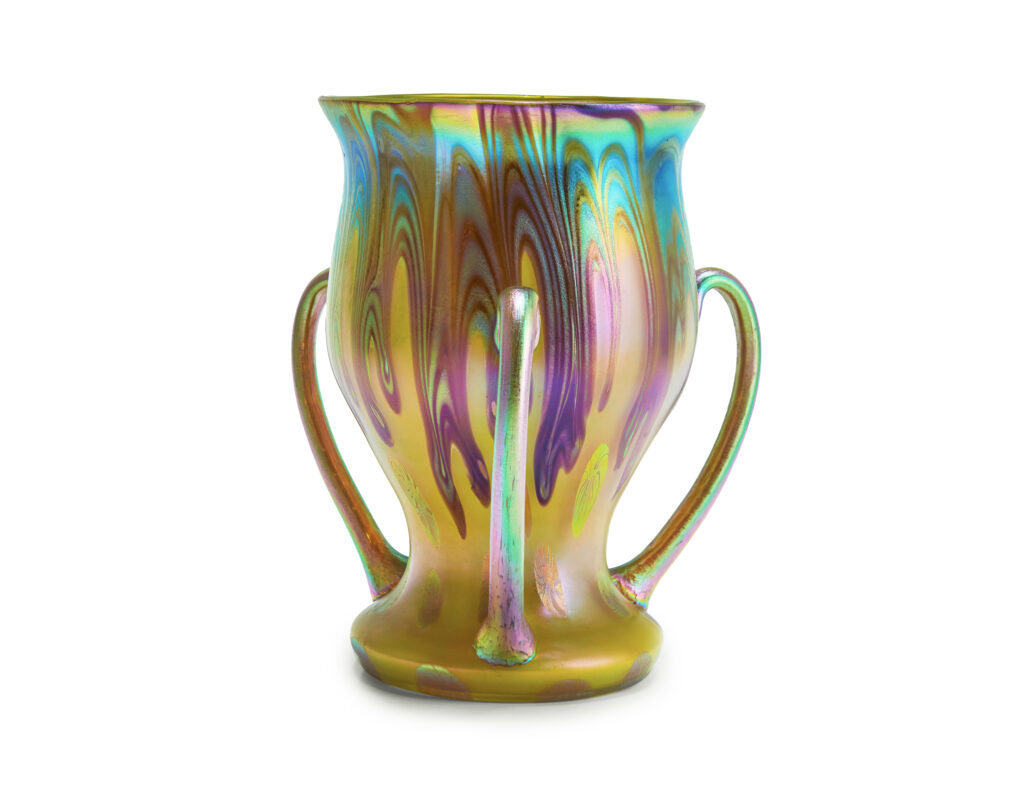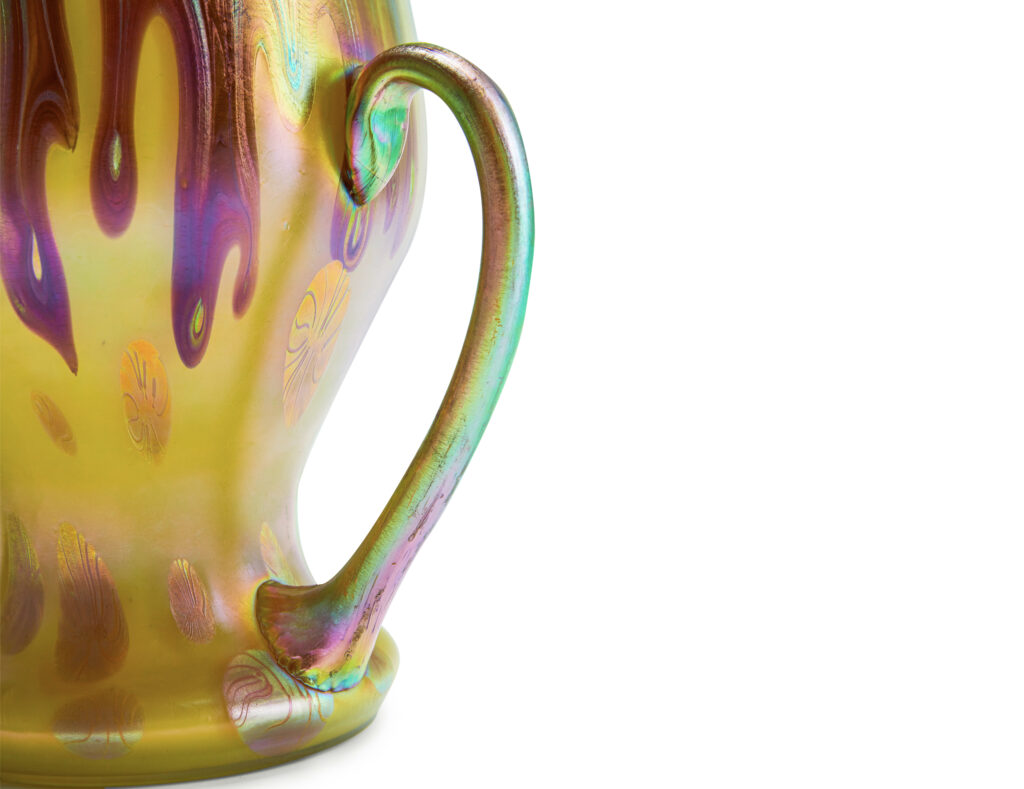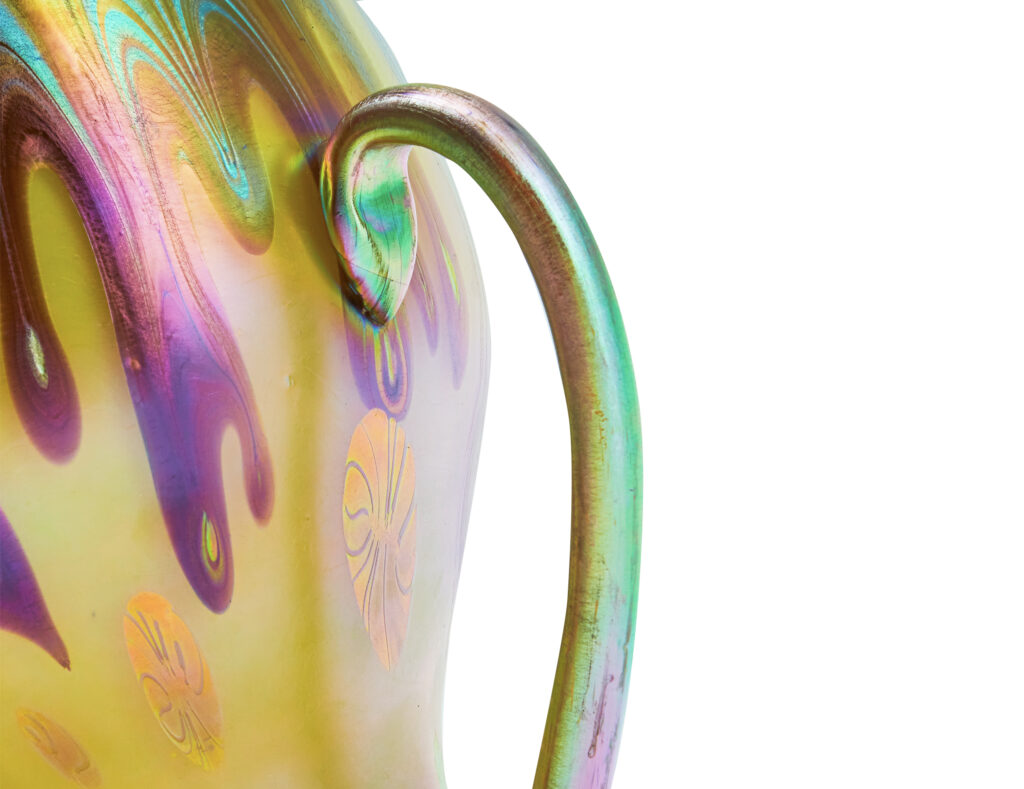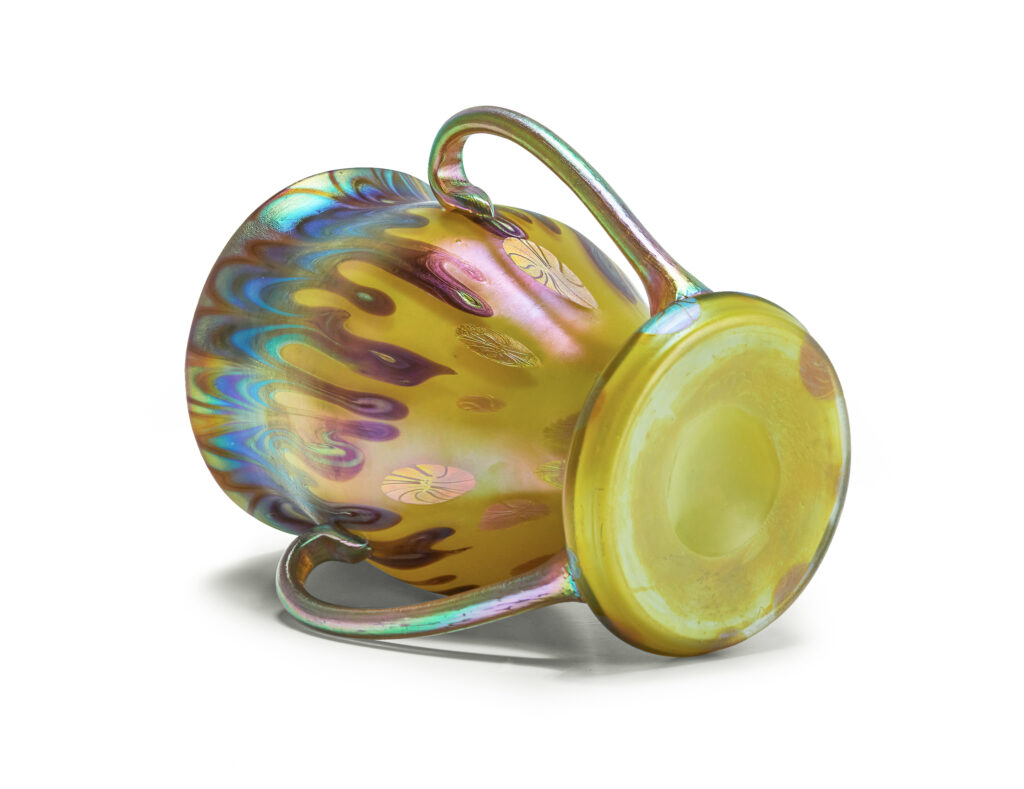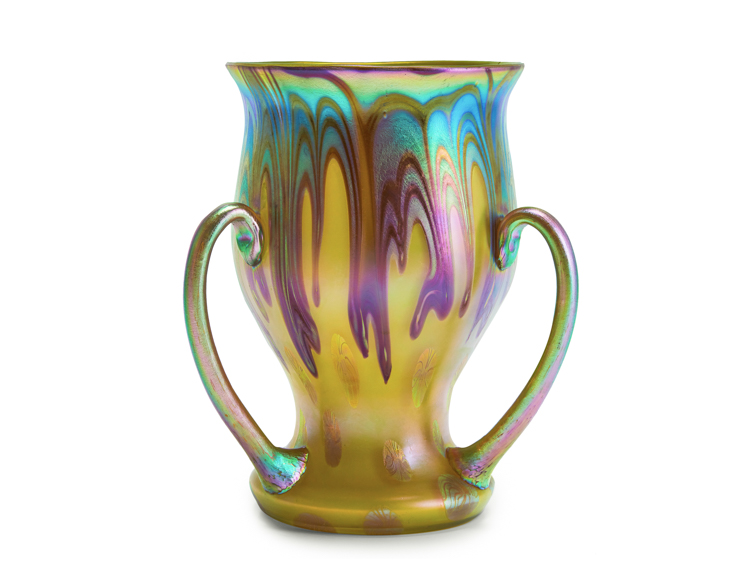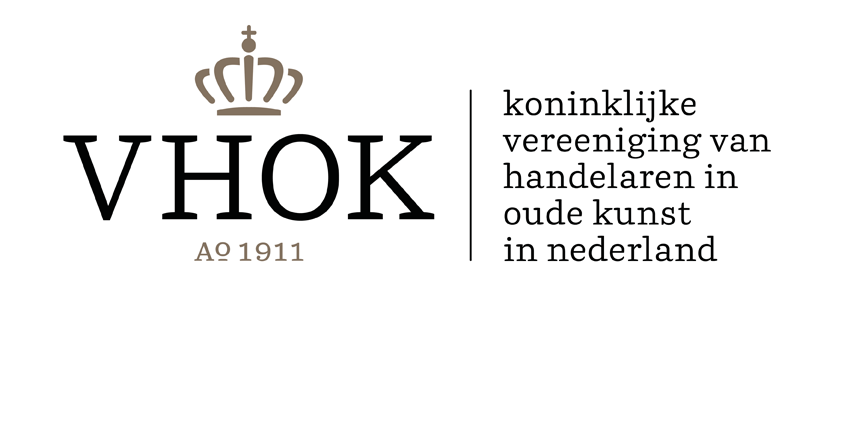Description:
Johann Loetz Witwe, commonly known as Loetz, was a prestigious glass manufacturer operating in the Bohemian region of modern-day Czech Republic. Established in 1836, Loetz rose to prominence during the late 19th and early 20th centuries, particularly during the Art Nouveau period, for its innovative glassmaking techniques and artistic designs. Under the leadership of Max Ritter von Spaun, the company pioneered new methods and styles that set it apart from its contemporaries, earning international acclaim.
Loetz was celebrated for its vibrant colors, intricate patterns, and the distinctive iridescent finishes that allowed its glass pieces to reflect light in captivating ways. The company’s ability to fuse traditional craftsmanship with modern artistry cemented its place as a leader in the decorative arts.
One of Loetz’s most significant contributions to glass art was the development of the Phänomen Genre series. Introduced in the late 19th century, this series revolutionized glass design by emphasizing complex surface treatments and vivid color transitions. The Phänomen Genre techniques involved layering and manipulating glass to produce optical effects such as iridescence and color shifts, achieved through the application of metallic salts and precise temperature control. This process resulted in dynamic pieces that appeared to change color depending on the angle of the light.
Phänomen Genre 2/314
The Phänomen Genre 2/314 vase is a stunning example of Loetz’s artistic mastery and innovation. Designed in 1902, this vase embodies the creative and experimental spirit of the Art Nouveau era.
Design and Execution:
- Color and Material: The vase is crafted in a ground color of metallic-yellow, which serves as a warm and luminous base. This vibrant hue is achieved through meticulous control of the glassmaking process and careful selection of raw materials.
- Decorative Layer: A beautiful fused glass layer, composed of brownish and violet glass, is a distinctive feature of this vase. This layer is artfully pulled downwards from the top of the vase, creating a dynamic pattern that contrasts strikingly with the metallic-yellow base. The interplay between these colors adds depth and complexity to the piece.
- Iridescence: The decorative layer is finished with a deep blue, silver, and purple iridescence. This effect is achieved by applying metallic salts and reheating the glass to bring out its shimmering qualities. The iridescence results in a captivating surface that changes color with different angles of light, making it difficult to capture its true beauty in photographs.
- Handles: The vase features three applied handles made of Silberiris glass, known for its silver-like sheen. These handles serve as both functional and decorative elements, enhancing the vase’s elegance and sophistication.
Condition and Details:
- Heatcheck: There is a very thin and almost unnoticeable heatcheck on one attachment of the handles. This minor flaw, a common occurrence in glassmaking, does not detract from the vase’s overall beauty and structural integrity. The heatcheck is subtle and can be challenging to see without close inspection. An image accompanies this description to provide a detailed view of the heatcheck.
Design and cataloging:
The vase was designed in 1902 and is included in the Prestel book Katalog der Musterschnitte (Production number Series II 2/674), a comprehensive catalog of design patterns that provides valuable insight into the range and diversity of Loetz’s creations. This catalog serves as an important historical document, showcasing the innovative designs that established Loetz as a leader in Art Nouveau glassmaking.
